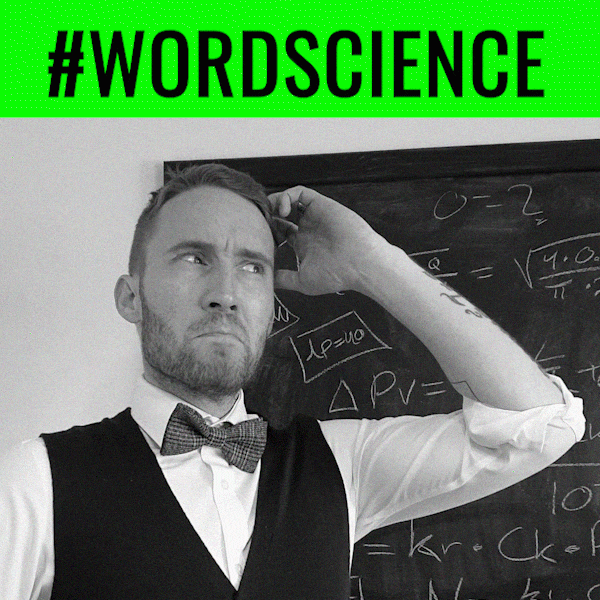When it comes to SaaS marketing, you’ve been around the block. You’ve walked these streets more times than you can remember. You’ve tried every kebab shop on the corner, and you know which ones to hit up – and which ones to avoid.
So you don’t need to listen to me rattle on about how noisy the market is getting. How it’s growing at a face-melting 19% year on year. Or how your competitors are getting their elbows out to break through the traffic and secure that prime spot.
You know you’ve got a tough job ahead of you. You don’t want to be told you’ll have to fight.
So what if I told you you didn’t have to?
What if instead, you could rise above the melee and, like some kind of levitating strategic genius, plan your way past the competition?
I’m here to tell you that’s more than possible. And that you can take the first steps to your new future right here, right now.
Follow my top three tips, and you’ll start on the road from marketing master to marketing maestro. With a strategy that doesn’t just get you the best market stall, but that has you competing on a whole different plane altogether.
There’s no time to waste: marketing maestros aren’t made overnight, so let’s get started.
#1 Treat your SaaS customers… like customers
It might seem, well, obvious, but for years B2B industries like SaaS have been thinking differently from their B2C contemporaries. “We deal with serious products,” they said, “we have to use dry, formal language that makes you want to boil your eyelids, because that’s what business is.”
Ok, that might not be an exact quote, but it’s clear that times are changing. As SaaS booms, the most successful marketers are thinking increasingly about their end-users as all-powerful customers. That means the sale needs to be made to the consumer in exactly the same way as in the B2C arena, to increase brand awareness, and to reach every part of your prospective customers’ businesses.
Peter Weinberg and Jon Lombardo of the B2B Institute break down how in strategic terms, B2B and B2C are exactly the same. For both:
“Effective marketing increases ‘mental availability’ by making a brand easily thought of in a buying situation. Effective marketing reaches every buyer in the category. Well-branded creative that captures attention will generate sales.”
So if the strategies are the same, it’s only the tactics that differ: the placement of your ads, the exact form and content of your campaigns.
But that’s where the differences stop. To become a true marketing maestro you need to address SaaS’s short sales cycle by harnessing the power of B2C techniques. That means:
- Deploying powerful content marketing campaigns that get more prospects into your funnel and gently increase their stage of awareness with value-driven blog posts and articles that solve their questions and address their needs
- Using persuasive emotional triggers and techniques from conversion copywriting that access the decision-making ‘primal brain’
- Humanising the tech talk by killing off jargon and lingo with a methodical passion
- Placing an instant clarity headline on your homepage and every landing page that delivers a clear message in six seconds or less
- Focusing on tangible benefits over technical features, addressing your prospects with specific ways your service will make their lives easier
Tuck into another plateful of tips for SaaS copywriting that converts.
#2 Be data-driven, not just ‘inspired’
Let’s face it, your competitors have more money than you. Unless you work for the likes of Zoom, Monday.com or Salesforce, it’s just one of those facts we have to live with.
But the good news is it’s not the size of the stick, it’s how you use it. So don’t focus on volume of spend; instead, think about how you’re spending it. Because in many cases, SaaS marketers are making the age-old blunder of basing decisions on gut feeling, rather than data and factual evidence.
Following an outside-in approach is key to getting your strategy on point and aiming all your resources – however limited – in the right direction. Properly targeted, even a small spend can have astonishing results for your bottom line.
So where do you start? With your prospective customers of course. Listen to them, and talk to them. Get inside their minds:
- What are their pain points?
- What anxieties might you be able to address?
- What are their desired outcomes from a platform such as yours?
Use surveys, buyer interviews, keyword research and social listening to gather ‘voice of customer’ data that you can reflect back at your future audience. This kind of research is particularly important for start-ups and founder-led businesses, as it helps you avoid the dreaded curse of knowledge that can stop you clearly seeing what your prospects do.
Crucially, keep the conversation with your customers going, and “treat feedback like a system, not an event or a campaign,” as Joel Klettke explains in Fountain’s SaaS panel.
Next, use that data to think about the journey you’re taking your audience on, and put in place a full-funnel optimisation strategy. That means:
- Not all leads are born equal, so make sure your marketing and sales teams are talking to each other. When marketers are incentivised based purely on volume, sales teams find themselves overwhelmed by an avalanche of low quality leads, so get your teams talking to focus on quality.
- It’s all about Customer Lifetime Value (CLV), so don’t drop the ball once customers move beyond the sale. In a subscription-based business retention is key, so think about ways to up-sell, cross-sell, and get your customers writing powerful reviews and referrals to draw in new business. Work to increase your average CLV, rather than purely pushing quantity over quality.
- Use advanced remarketing across channels to stay ever-present in your audience’s digital world, using tried and tested language and content that addresses their needs based on their stage of awareness.
#3 If you build it, they won’t come
Sorry Kevin Costner, but in an overcrowded marketplace it’s no longer enough to simply come up with the best platform or tool for your target sector.
As the noise ramps up, not only does user expectation increase, but you’ll start to spot sound-alikes and look-alikes around every corner. It’s there for all to see: honestly, how many SaaS websites have you seen that look… the same?
Our 2021 review of SaaS marketing found that website clarity and navigation are some of the biggest purchase barriers for prospective customers. This means that marketers simply aren’t doing enough to clarify, persuade, compel, convince, or differentiate themselves from the competition.
So you need to be investing in branding and powerful content that makes your unique proposition clear as day. How do you achieve that clarity?
- Start with the buyer data you’ve already collected so you can understand the pain points that are likely to trigger a response. Importantly, these will be different for every part of your target audience’s company structure. You need to reach everyone at the business: not just the initial contact, but also the IT department assessing how your tool will integrate, the end-users who want ease of use and to experience tangible benefits day-to-day, and the senior executives who carry the ultimate buying decision. They’re all people with stresses and internal pressures, so speak to them all in words they can understand.
- Follow a strategic process by defining a clear Unique Value Proposition based on competitor analysis. Ask yourself why customers should use your product, and distil your answer into a few lines that you can use as an elevator pitch.
- Finally, it’s time to flesh that pitch out into powerful messaging that compels and converts. Your copy and content should be specifically targeted at identified audience segments at each stage of your funnel, with a distinct tone of voice that moves them to action. Don’t rush this stage, it needs the expert application of creativity and data to get your messaging just right.
At every stage, you need to keep things easy for your reader. Use simple language. Try to limit yourself to one ‘thought’ per sentence. Keep your paragraphs short. And accommodate skim-readers with headers and sub-headers that tell your story, backed up by easy to absorb bullet points.
Put it all together, and you’ll find that greater clarity brings a big boost to conversions.
Ready to SaaS?
It’s a lot to take in, and Rome wasn’t built in a day, so break down your plan into smaller steps to climb one at a time.
Before you know it, you’ll glance over your shoulder in shock at how far you’ve come.
And if you’re after some more in-depth guidance for your future SaaS marketing maestro-dom, check out our free eBook.
See you at the top.
Love you,
Konrad



